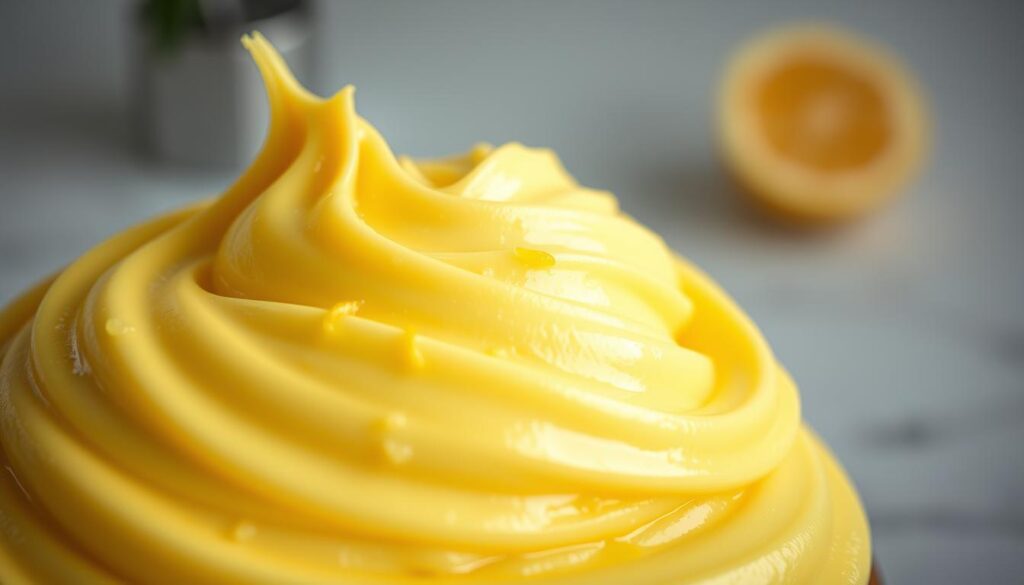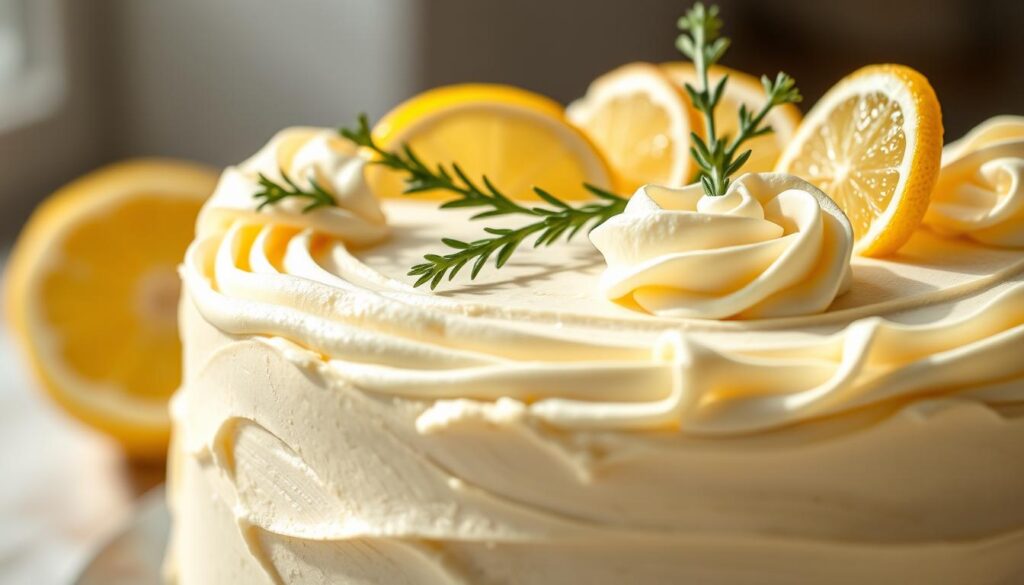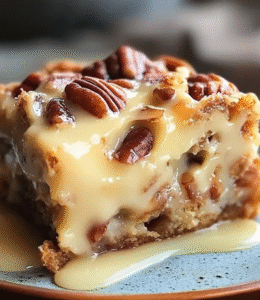Welcome to the world of heavenly lemon cakes! In this article, we’ll guide you through baking a treat that’s sure to impress your friends and family. This moist and tangy dessert is perfect for any occasion.
With our easy-to-follow lemon cake recipe, you’ll be able to create a truly unforgettable dessert. The best lemon cake is one that’s both tangy and sweet, making it a hit at casual gatherings and special celebrations alike.
Key Takeaways
- Easy-to-follow lemon cake recipe for a heavenly treat
- Tips for achieving the perfect balance of tanginess and sweetness
- Ideal dessert for any occasion, from casual to special events
- Moist and flavorful cake that’s sure to impress
- Simple ingredients and straightforward baking process
Introduction to Lemon Cakes
The refreshing zing of lemon cakes has made them a popular choice for celebrations and everyday treats alike. Lemon cakes have been a staple in bakeries and homes for centuries, and their enduring popularity can be attributed to the unique charm of lemon flavors.
The Allure of Lemon Flavors
Lemon flavors bring a brightness and uplift to desserts, making them incredibly appealing. The combination of the tanginess from lemon juice and the subtle bitterness from lemon zest creates a complex and refreshing taste experience. This unique flavor profile is a key reason why lemon cake remains a favorite among many.
- The citrusy flavor of lemons adds a refreshing twist to traditional cake recipes.
- Lemon zest provides a burst of citrus flavor, enhancing the overall taste.
- The acidity in lemons helps balance the sweetness, creating a well-rounded flavor profile.
A Brief History of Lemon Cake
Lemon cakes have a rich history that dates back to the early days of baking. The use of lemons in baking originated in Mediterranean regions where lemons were abundant. As trade and exploration expanded, lemons became more widely available, leading to the creation of various lemon-based desserts, including lemon cake.
The evolution of lemon cake recipes over time has been influenced by cultural and culinary trends. Today, lemon cake is enjoyed worldwide, with various adaptations and creative twists.
Why Lemon Cake is a Popular Choice
Lemon cake’s popularity can be attributed to its versatility and the emotional connections people have with it. Whether it’s served at a family gathering, used as a celebratory dessert, or simply enjoyed as a treat, lemon cake is often at the center of warm memories and special moments.
- Lemon cake is a versatile dessert that can be dressed up or down, making it suitable for various occasions.
- The bright, citrusy flavor of lemon cake provides a refreshing contrast to richer desserts.
- Lemon cake can be paired with a variety of toppings and fillings, allowing for creative expression.
Essential Ingredients for the Perfect Lemon Cake
The secret to a heavenly lemon cake lies in the quality and combination of its essential ingredients. When it comes to baking a moist lemon cake, understanding the role of each component is crucial.
One of the most critical decisions you’ll make when preparing a homemade lemon cake is whether to use fresh lemons or bottled juice. Fresh lemons provide a vibrant, citrusy flavor that is hard to replicate with bottled juice. As Ina Garten once said, “How can you have a beautiful cake without a beautiful lemon flavor?” Fresh lemons are a must for that authentic taste.
Fresh Lemons vs. Bottled Juice
Using fresh lemons allows you to control the amount of juice and zest you add to your cake, which is essential for achieving the right balance of flavors. Bottled juice, on the other hand, can contain preservatives and may lack the brightness of fresh lemons. For a lemon cake recipe that stands out, fresh lemons are the way to go.
Types of Flour: Which is Best?
The type of flour you choose can significantly affect the texture of your cake. All-purpose flour is a popular choice for homemade lemon cake because it provides a good balance between structure and tenderness. Cake flour, with its lower protein content, can result in a tender crumb, while bread flour can make the cake denser.
For a moist lemon cake, it’s essential to select a flour that will hold the right amount of moisture without becoming too dense. Experimenting with different types of flour can help you find the perfect texture for your lemon cake recipe.
The Role of Sugar and Fat
Sugar and fat are crucial components that contribute to the moisture, flavor, and overall texture of your cake. Sugar not only sweetens the cake but also helps to tenderize it and enhance its texture. The type and amount of fat (such as butter or oil) you use can significantly impact the cake’s moisture level and flavor profile.
As
“The best cakes are the ones that are made with love and the finest ingredients,”
a principle that underscores the importance of quality in every component of yourhomemade lemon cake.
Equipment You’ll Need to Bake a Lemon Cake
Baking a lemon cake requires more than just a great recipe; it demands the right equipment to ensure a smooth process and a delightful outcome. Having the correct tools not only makes the baking process more efficient but also significantly impacts the final product’s quality.
Must-Have Baking Tools
To start, you’ll need some fundamental baking tools. A digital scale is crucial for measuring ingredients accurately, ensuring your cake has the right balance of flavors. An electric mixer, whether stand or handheld, is indispensable for creaming together butter and sugar, beating eggs, and mixing batter until it’s smooth and well combined.
Mixing Bowls and Utensils
The right mixing bowls and utensils are vital for preparing your lemon cake batter. Stainless steel or glass bowls are preferred because they are durable and easy to clean. You’ll also need a whisk for mixing dry ingredients and a rubber spatula for scraping the sides of the bowls, ensuring all ingredients are well incorporated.
The Importance of a Good Cake Pan
A good cake pan is essential for achieving a perfectly baked lemon cake. It ensures even baking and gives your cake a beautiful shape. Non-stick pans are highly recommended as they prevent the cake from sticking and make it easier to remove once baked. For an easy lemon cake recipe, using a high-quality cake pan is a simple yet effective way to enhance your final product.
Investing in the right equipment is a step towards baking a lemon cake that’s not only delicious but also visually appealing. With the correct baking tools and a bit of practice, you’ll be well on your way to mastering the art of baking a lemon cake.
Step-by-Step Recipe for Making Lemon Cake
Creating a heavenly lemon cake requires attention to detail and a straightforward process that we’ll guide you through. Making a lemon cake from scratch is a rewarding experience that results in a moist and flavorful dessert perfect for any occasion.
Preparing the Ingredients
To start, gather all the necessary ingredients. You’ll need fresh lemons, flour, sugar, eggs, and butter. Using high-quality ingredients is crucial for achieving the best flavor. Ensure your lemons are fresh, and your dairy products are at room temperature to facilitate a smooth batter.
For a classic lemon cake, you’ll need:
- 2 1/4 cups all-purpose flour
- 1 1/2 cups granulated sugar
- 3 large eggs
- 2 teaspoons baking powder
- 1/2 teaspoon salt
- 1/2 cup unsalted butter, softened
- 2 tablespoons freshly squeezed lemon juice
- 1 teaspoon vanilla extract
Mixing the Batter
Begin by preheating your oven to 350°F (175°C). Grease and flour two 9-inch round cake pans. In a large mixing bowl, cream together the butter and sugar until light and fluffy. Beat in the eggs one at a time, followed by the lemon juice and vanilla extract.
In a separate bowl, whisk together the flour, baking powder, and salt. Gradually add the dry ingredients to the wet ingredients, mixing until just combined. Avoid overmixing to ensure your cake remains tender.

Baking the Cake
Divide the batter evenly between the prepared pans. Baking the cake correctly is crucial for achieving the right texture. Bake for 25-30 minutes or until a toothpick inserted into the center comes out clean.
Remove the cakes from the oven and let them cool in the pans for 5 minutes. Then, transfer them to a wire rack to cool completely. This step is essential for preventing the cakes from becoming soggy.
Tips for Baking the Perfect Lemon Cake
To create a lemon cake that’s both delicious and visually appealing, follow these expert baking tips. Baking the perfect lemon cake requires attention to detail and a few expert tricks. By mastering the right techniques, you can ensure your cake turns out moist, flavorful, and beautifully presented.
Oven Temperature Matters
One of the most critical factors in baking the best lemon cake is ensuring your oven is at the right temperature. An oven that’s too hot or too cold can significantly affect the texture and consistency of your cake. Invest in an oven thermometer to verify the temperature before you start baking.
How to Test for Doneness
Testing for doneness is crucial to avoid overcooking or undercooking your lemon cake. Use the toothpick test by inserting a toothpick into the center of the cake. If it comes out clean or with a few moist crumbs, the cake is done. If not, give it a few more minutes and test again.
Avoiding Common Baking Mistakes
Avoiding mistakes is key to baking a successful lemon cake. Common mistakes include overmixing the batter, not greasing the cake pan properly, and opening the oven door too often. By being mindful of these potential pitfalls, you can ensure your cake turns out perfectly.
By following these baking tips and being mindful of the potential pitfalls, you’ll be well on your way to creating a best lemon cake that’s sure to impress your friends and family.
Creative Variations on Lemon Cake
Lemon cake is a versatile canvas waiting for your creative brushstrokes. While the classic recipe is a timeless favorite, there’s always room for innovation and experimentation. By incorporating new flavors and ingredients, you can create unique desserts that are sure to impress your family and friends.
Lemon Blueberry Cake
One delightful variation is the lemon blueberry cake. The sweetness of blueberries complements the tartness of lemon perfectly, creating a balanced flavor profile. To make this variation, simply fold in a cup of fresh or frozen blueberries into your lemon cake batter. The result is a moist and flavorful cake that’s perfect for spring.
Lemon Coconut Cake
Another exciting twist is the lemon coconut cake. The addition of shredded coconut adds texture and a tropical flavor that pairs beautifully with lemon. You can incorporate coconut into the batter or use it as a topping, along with a sprinkle of toasted coconut flakes for extra flavor.
Lemon Cake with a Twist of Herbs
For a more sophisticated take, consider adding a twist of herbs to your lemon cake. Fresh herbs like basil, rosemary, or lemon verbena can add a fascinating depth to the cake. Simply chop the herbs finely and mix them into the batter. The result is a complex and intriguing flavor profile that’s sure to impress.
These creative variations on lemon cake offer endless possibilities for experimentation and innovation. Feel free to mix and match different ingredients to create your own unique flavor combinations.
Frosting and Toppings for Your Lemon Cake
Frosting and toppings are the final touches that can make or break your lemon cake’s flavor and appeal. The right choice can elevate your dessert to new heights, making it a memorable treat for any occasion.
Classic Lemon Buttercream Frosting
A classic choice for lemon cake is lemon buttercream frosting. Made with fresh lemons, butter, and powdered sugar, this frosting is both tangy and sweet. To make it, you’ll need:
- 1 cup unsalted butter, softened
- 2 cups powdered sugar
- 2 tablespoons freshly squeezed lemon juice
- 1 teaspoon lemon zest
Beat the butter until creamy, then gradually add the powdered sugar, beating until smooth. Add the lemon juice and zest, and beat until fully incorporated.
Glazing Options for a Shine
For a simpler approach, consider a glaze to add a shiny finish to your lemon cake. A lemon glaze made with powdered sugar and lemon juice can be drizzled over the cake for a beautiful effect.
| Glaze Type | Ingredients | Tips |
|---|---|---|
| Lemon Glaze | Powdered sugar, lemon juice | Adjust consistency with more sugar or juice |
| Simple Syrup Glaze | Simple syrup, powdered sugar | Brush over the cake for a moist finish |
Fruit Toppings for a Fresh Twist
Adding fruit toppings can provide a fresh and fruity twist to your lemon cake. Consider using:
- Fresh berries (strawberries, blueberries, raspberries)
- Sliced citrus fruits (oranges, lemons, limes)
- Diced apples or pears for a autumnal touch
Arrange the fruit on top of the cake in a pattern that suits your occasion, or simply sprinkle them over the frosting for a rustic look.
By choosing the right frosting and toppings, you can customize your lemon cake to suit any taste or occasion, making it a truly special dessert.
Decorating Techniques for Lemon Cake
Decorating your lemon cake is an opportunity to add a personal touch and make it truly special. Whether you’re a seasoned baker or a beginner, the right decorating techniques can elevate your cake from ordinary to extraordinary.
Simple Yet Elegant Designs
Creating a beautiful lemon cake doesn’t have to be complicated. Simple yet elegant designs can be achieved with a few basic tools and some creativity. Consider using a lemon buttercream frosting and a piping bag to create smooth, flowing patterns on the surface of your cake.

The Art of Layering
Layering is a decorating technique that adds depth and visual interest to your lemon cake. To create a layered cake, you’ll need to bake multiple cakes and stack them on top of each other, using frosting or jam to hold them together. This technique not only looks impressive but also allows you to incorporate different flavors and textures into your cake.
For a stunning layered lemon cake, consider using a combination of lemon curd and buttercream frosting between the layers. This will add a tangy, citrusy flavor and a rich, creamy texture.
Adding Edible Flowers
Edible flowers can add a touch of elegance and sophistication to your lemon cake. Popular choices include violas, pansies, and nasturtiums, which come in a variety of colors and are safe to eat. When using edible flowers, make sure to gently press them into the frosting or place them on top of the cake to create a beautiful, delicate design.
Remember to only use flowers that are free of pesticides and have been grown specifically for consumption. This will ensure that your cake is not only beautiful but also safe to eat.
Pairing Suggestions with Lemon Cake
The delightful taste of lemon cake can be further enhanced by carefully chosen beverages and side dishes. Creating a harmonious dessert experience involves more than just the cake itself; it’s about crafting an atmosphere and a flavor profile that complements its bright, citrusy notes.
Best Beverages to Serve
When it comes to pairing beverages with lemon cake, there are several options that can elevate the dessert experience. Here are a few suggestions:
- Fresh Lemonade: A glass of freshly squeezed lemonade can complement the lemon flavors in the cake, creating a cohesive taste experience.
- Iced Tea with Lemon: For a lighter option, iced tea infused with lemon slices can provide a refreshing contrast to the richness of the cake.
- Coffee: For those who prefer a caffeinated beverage, a cup of coffee can provide a nice balance to the sweetness of the lemon cake.
Complementary Desserts
Pairing lemon cake with other desserts can create a delightful variety of flavors and textures. Consider the following options:
| Dessert | Description | Why It Pairs Well |
|---|---|---|
| Fresh Fruit Salad | A mix of seasonal fruits such as strawberries, blueberries, and raspberries. | The freshness and natural sweetness of the fruit complement the tartness of the lemon cake. |
| Coconut Macaroons | Chewy cookies made with coconut flakes. | The coconut flavor pairs well with lemon, and the texture provides a nice contrast. |
| Vanilla Ice Cream | Creamy ice cream with a hint of vanilla. | The smoothness of the ice cream and the subtle vanilla flavor can soothe the palate between bites of lemon cake. |
“The art of pairing desserts is not just about matching flavors, but also about creating a sensory experience that delights the palate.” –
Side Dishes That Go Well
While lemon cake is a dessert on its own, serving it with appropriate side dishes can enhance the overall dining experience. Some suggestions include:
- Fresh Fruit Tarts: Mini tarts filled with a mix of fresh berries can add a pop of color and flavor to the dessert table.
- Creamy Panna Cotta: An Italian dessert made with sweetened cream that’s set with gelatin, flavored with vanilla, and served chilled.
- Lemon Curd: A tangy and sweet spread made with lemons, sugar, eggs, and butter, perfect for serving alongside the cake or on toast.
By thoughtfully selecting beverages, complementary desserts, and side dishes, you can create a well-rounded and enjoyable dessert experience that showcases the delightful taste of lemon cake.
Storing and Preserving Your Lemon Cake
To keep your lemon cake fresh for a longer period, proper storage is key. After investing time and effort into baking the perfect lemon cake, it’s essential to store it correctly to maintain its flavor and texture.
Best Practices for Storing
When it comes to storing your lemon cake, the first step is to ensure it has cooled down completely. This prevents moisture from getting trapped, which can lead to sogginess. Once cooled, wrap the cake tightly in plastic wrap or aluminum foil to prevent air from drying it out. You can also store it in an airtight container to maintain freshness.
Reheating Tips for Leftovers
If you’ve stored your lemon cake and want to enjoy it warm, reheating it is a great option. To reheat, simply place a slice in the microwave for a few seconds or until it’s warmed through. Be cautious not to overheat, as this can dry out the cake. Alternatively, you can reheat it in a conventional oven at a low temperature, wrapped in foil to prevent drying.
Tip: If you’re reheating a large portion, it’s best to use the oven to maintain even heating.
Freezing Your Lemon Cake
For longer-term storage, freezing is an excellent option. To freeze your lemon cake, wrap it tightly in plastic wrap or aluminum foil, making sure to press the wrapping directly onto the cake’s surface to prevent freezer burn. Place the wrapped cake in a freezer-safe bag or container for added protection. When you’re ready to enjoy it, simply thaw at room temperature or reheat as needed.
Freezing Tips: Label your frozen cake with the date, and consider slicing it before freezing for easier thawing and reheating of individual portions.
Frequently Asked Questions About Lemon Cake
Whether you’re a seasoned baker or a newcomer to the world of lemon cakes, you’re likely to have some questions. Below, we’ve compiled answers to some of the most frequently asked questions about making and enjoying lemon cake.
How Can I Make My Lemon Cake Moist?
To ensure your lemon cake remains moist, it’s crucial to not overmix the batter, as this can lead to a dense cake. Additionally, using the right amount of lemon juice and zest, along with ingredients like buttermilk, can help retain moisture. Tips for a moist lemon cake include:
- Using room temperature ingredients
- Not overbaking the cake
- Incorporating sour cream or yogurt into the batter
What’s the Best Way to Transport a Cake?
Transporting a cake requires care to prevent damage. The best approach involves:
- Using a sturdy cake box that is the right size for your cake
- Placing the cake on a non-slip surface within the box
- Keeping the cake away from direct sunlight and heat sources during transport
For longer distances or in hot weather, consider using a cooler with ice packs to keep the cake cool and stable.
Can I Use Gluten-Free Flour?
Yes, you can use gluten-free flour to make a lemon cake. However, it’s essential to choose a gluten-free flour blend that is designed for baking cakes, as it will contain a mix of flours and starches that help mimic the structure gluten provides. Some tips for using gluten-free flour include:
- Following the package instructions for the ratio of gluten-free flour to other ingredients
- Adding xanthan gum or guar gum if the blend doesn’t already contain it
- Being prepared for a slightly different texture and taste
By addressing these common questions, we hope to help you achieve success with your lemon cake baking endeavors. Whether you’re looking to perfect your recipe, transport your cake safely, or accommodate dietary restrictions, we’ve got you covered.
Conclusion: Enjoying Your Lemon Cake Experience
Baking a lemon cake is not just about following a recipe; it’s about creating a moment to be shared with others. As you’ve learned throughout this article, the process involves selecting the right ingredients, mastering baking techniques, and adding a personal touch to make your cake truly special.
Sharing the Joy
There’s a unique joy in sharing desserts with family and friends. Whether it’s a casual gathering or a special celebration, a lemon cake is sure to bring smiles to those around you. By sharing your creations, you’re not only spreading happiness but also creating memories that will last a lifetime.
Celebrating Life’s Moments
Cakes have a way of making any occasion feel more special. From birthdays to weddings, and from casual brunches to holiday gatherings, a lemon cake can be the perfect centerpiece. Its bright, citrusy flavor is sure to delight your guests and leave a lasting impression.
Exploring New Recipes
The world of baking is full of possibilities, and experimenting with new recipes is a big part of the fun. Don’t be afraid to try new flavors, ingredients, and techniques to make your lemon cake truly one-of-a-kind. By embracing this spirit of experimentation, you’ll continue to grow as a baker and enjoy the process of creating delicious treats for yourself and others.
FAQ
How do I make a moist lemon cake?
To make a moist lemon cake, ensure you’re not overmixing the batter, and use ingredients like sour cream or Greek yogurt to add moisture. Also, don’t overbake the cake, as this can cause it to dry out.
Can I use bottled lemon juice instead of fresh lemons?
While bottled lemon juice can be used in a pinch, it’s recommended to use fresh lemons for the best flavor. Fresh lemons provide a brighter, more citrusy taste that’s hard to replicate with bottled juice.
What’s the best way to store a lemon cake?
To store a lemon cake, wrap it tightly in plastic wrap or aluminum foil and keep it at room temperature for up to three days. You can also store it in the refrigerator for up to five days or freeze it for up to two months.
How do I make a lemon drizzle cake?
To make a lemon drizzle cake, bake a lemon cake and then drizzle a mixture of lemon juice and powdered sugar over the top of the cake while it’s still warm. This will create a sweet and tangy glaze.
Can I use gluten-free flour to make a lemon cake?
Yes, you can use gluten-free flour to make a lemon cake. However, keep in mind that gluten-free flours can behave differently, so you may need to adjust the ratio of flours and add xanthan gum or guar gum to help with texture.
What’s the best way to transport a lemon cake?
To transport a lemon cake, place it on a sturdy cake stand or board, and cover it with a cake carrier or a large, inverted bowl. This will help prevent damage and keep the cake secure during transport.
How do I make a lemon pound cake?
To make a lemon pound cake, use a traditional pound cake recipe and add lemon zest and lemon juice to the batter. You can also add a lemon glaze or drizzle to the top of the cake for extra flavor.




